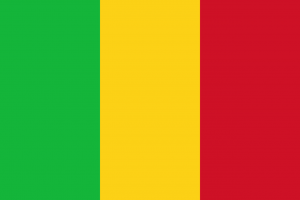Language/Bambara/Grammar/How-to-Use-Be
Hi Bambara learners! 😊
In this lesson, we will focus on the verb "be" in Bambara. This verb is often used to connect a subject to a description or a state of being. It is an essential verb to know when learning any language, and Bambara is no exception. By the end of this lesson, you will have a better understanding of how to use the verb "be" in Bambara.
After mastering this lesson, these related pages might interest you: Questions & How to Use Have.
The Verb "Be"[edit | edit source]
The verb "be" in Bambara is expressed in different ways depending on the tense, the subject, and the context of the sentence. It can be translated into English as "am", "is", "are", "was", or "were" depending on the tense and subject. Unlike in English, Bambara does not always require the verb "be" to be present in a sentence. The meaning can be conveyed through context alone.
Here's how the verb "be" is conjugated in Bambara:
| English | Bambara | Pronunciation |
|---|---|---|
| I am | mara | /ma.ra/ |
| You are (singular) | bè | /be/ |
| He/She/It is | o | /o/ |
| We are | maran | /ma.ran/ |
| You are (plural) | mun | /mun/ |
| They are | won | /woŋ/ |
As you can see, the verb "be" is conjugated differently depending on the subject. Let's see some examples to understand how to use it in context.
Examples[edit | edit source]
Present Tense[edit | edit source]
Person 1: Mina bè don? (What is your name?) Person 2: Banfa. (My name's Banfa.)
In this example, the verb "be" is not explicitly present but is implied through context. The question is asking for someone's name, which is a description or a state of being. The response is the name itself, which is the subject of the sentence.
Person 1: I wolodo ye bè? (Are you a student?) Person 2: Ayè. (Yes.)
In this example, the verb "be" is present in the question, conjugated for the second person singular "bè". The response is a simple "ayè" which means "yes" but implies "I am a student".
Person 1: I san bè ye? (What's your age?) Person 2: San kɔnɔn bɛ. (I am 20 years old.)
In this example, we can see the verb "be" explicitly present, in both the question "san bè ye" and the response "san kɔnɔn bɛ". The question is asking for an age, which again is a description or a state of being that requires the verb "be".
Past Tense[edit | edit source]
Person 1: I ka bɔ ye ka n ye? (Were you at my house yesterday?) Person 2: Ayè, mɔgɔ nin bɔ ye. (Yes, I was there yesterday.)
In this example, we can see the past tense form of the verb "be" in Bambara, which is ka. The question is asking if the person was at someone else's house yesterday, and the response confirms that they were there.
Person 1: An na n mɔgɔ ya? (Where were you this morning?) Person 2: An ka taalo kan na. (I was at work this morning.)
Again, we can see the past tense form of the verb "be" in the response "an ka taalo kan na". The question is asking where someone was this morning, and the response provides that information.
Future Tense[edit | edit source]
Person 1: Anw ka bɛ ka taalo kan? (Will you be at work tomorrow?) Person 2: Ayè, wijɔgɔ nin bɛ ka taalo kan. (Yes, I will be there tomorrow.)
In this example, we can see the future tense form of the verb "be" in Bambara, which is bɛ. The question is asking if someone will be at work tomorrow, and the response confirms that they will be.
Person 1: Ɲɛgɛna san bɛ kɛ? (How old will you be next year?) Person 2: San kelenfila bɛ. (I will be 21 years old.)
Once again, we can see the future tense form of the verb "be" in the response "san kelenfila bɛ". The question is asking for someone's age next year, and the response provides that information.
Conclusion[edit | edit source]
Using the verb "be" in Bambara is not difficult, but it requires practice and understanding of the context. Remember that the verb is not always necessary and can be implied through context alone, but when it is necessary, it has to be conjugated differently depending on the subject and the tense. To improve your Bambara Grammar, you can also use the Polyglot Club website. Find native speakers and ask them any questions!
➡ If you have any questions, please ask them in the comments section below.
➡ Feel free to edit this wiki page if you think it can be improved. 😎
Finished this lesson? Check out these related lessons: Plurals & Negation.
Videos[edit | edit source]
How to count from 1-10 in Bambara/Dioula - YouTube[edit | edit source]
Other Lessons[edit | edit source]
Sources[edit | edit source]

